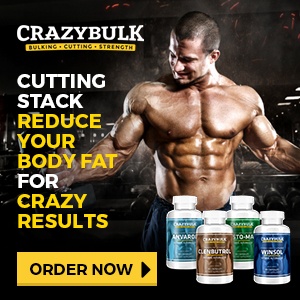Contents
Fat Burning Workouts
Intense workouts burn more calories than low-intensity cardio. These workouts can range from Tabata to HIIT. High-intensity workouts are great for fat burning as they can increase your metabolism for up to 72 hours after completing a workout. Some of the most popular fat burning workouts include CrossFit, Tabata, and HIIT. Here are the benefits of each type of workout.
High-intensity interval training (HIIT) burns more calories than low-intensity cardio
High-intensity interval training (HIIT) increases post-exercise oxygen consumption and calorie-burning after exercise. This means you’ll continue to burn calories even after you’ve left the gym. Plus, the HIIT technique increases growth hormone levels and other compounds that are associated with fat burning. The benefits of HIIT are numerous.
High-intensity interval training (HIIT) is not for everyone. It can improve your overall fitness level and athletic performance. You should consult your doctor before starting any exercise program, particularly if you have a medical condition. In some cases, your doctor may suggest modifications to prevent injury. For others, it may be beneficial to perform HIIT as a way to lose weight and build muscle mass.
High-intensity interval training has been proven to improve aerobic fitness more than continuous forms of exercise. The key hypothesis is that HIIT improves the heart’s ability to pump blood, which is an important determinant of VO2 max. This hypothesis has been verified by recent studies. The benefits of HIIT have been found in obese and overweight populations.
A HIIT workout on the stationary bike could consist of 30 seconds of fast cycling and several minutes of slow cycling. Each round, or repetition, would last four to six minutes. The length of each exercise and recovery time depends on the intensity of the workout. HIIT is time-efficient and produces better results. The HIIT method burns more calories than low-intensity cardio for fat burning.
High-intensity cardio can be performed in the gym while fasted or while fasting. This mode allows for fat burning without sacrificing muscle. In addition, HIIT elicits the same hormonal response as resistance training. HIIT increases the body’s sensitivity to work and spars muscle glycogen. This increases the body’s calorie-burning capacity and boosts muscle mass.
Plyometrics
You’ve probably heard of plyometrics, but what is it? These exercises build endurance by requiring more energy. They also burn tons of fat by forcing the body out of its comfort zone. And the best thing is, you can do them with simple props from your home! But how do you get started? Read on to learn how to do plyometrics for fat burning workouts.
When performing plyometrics, you’ll do a series of hops and jumps that are higher and faster than each other. The landing from each jump stretches the muscles, which helps whip them into shape. While plyometrics are fun and can lead to faster results, they shouldn’t be performed daily or for very long. You also need a good amount of basic fitness and knowledge of form.
While most people associate plyometrics with intense athletic activities, there’s no need to limit plyometrics to just jumping. Jumping, for example, can boost your energy levels, which helps you burn fat while building lean muscle. Combined with a good nutrition plan, plyometric exercises are an efficient way to lose fat. Plyometric workouts can also be done in a circuit style, creating a high-intensity training environment for optimal fat burning.
While you might not be familiar with plyometrics, they’re a good addition to any exercise program. They combine cardio and strength training to target the whole body. This allows you to get an amazing fitness routine in a fraction of the time! This type of workout will burn significant amounts of calories and improve your cardiovascular fitness. You’ll also get a better EPOC, a great benefit for fat burning.
Kickboxing
In a Kickboxing class, you’ll be using a combination of low and high-intensity exercises to blast fat and build core strength. The low-intensity exercises improve technique and strengthen the muscles of the upper body, and the high-intensity intervals will increase metabolic burn and peak anaerobic performance. Each kickboxing exercise will require the use of the abdominals, obliques, and intercostals. Because of this, you’ll be working on these areas and trimming your waistline.
Several studies have shown that kickboxing can improve overall health and fitness. Kickboxing has been proven to improve cardiovascular endurance. A 2014 study found that kickboxers had higher VO2max (VO2max), a measurement of the amount of oxygen their bodies can utilize during physical activity. A higher VO2max is an indicator of higher cardiovascular endurance and a stronger heart. It also improved muscle strength.
In addition to a high-intensity kickboxing workout, you should drink plenty of water. You should aim for a minimum of sixteen cups of water for men and eleven cups for women each day. Don’t forget about the importance of eating a healthy diet. It can help you achieve your goal of losing weight. Aside from drinking water and hydrating yourself, kickboxing requires the right nutrition to help you get the results you’re looking for.
Regular kickboxing classes mimic anaerobic exercise. The workouts emphasize proper form and kicking with the legs. In this way, you’ll develop mobility in the lower body, allowing you to move at a steady pace for the duration of the class. Core strengthening may also be practiced during the sessions, which strengthens the center of your body. In addition to improving muscle strength and improving cardiovascular endurance, kickboxing is a great fat burning workout.
Strength training
There are many benefits to strength training for fat burning. Strength training can increase your metabolism and boost your lean mass while safely elevating your heart rate into the fat-burning zone. The extra oxygen you get during your workout also allows your body to continue to burn calories long after you leave the gym. Beginners and experienced bodyweight exercisers alike can benefit from this type of workout. Here are some of the most effective exercises for fat burning:
The best strength-training workouts are about an hour long. They should be done three to five days a week, but not every day. Try taking a day off between every two workouts. For example, if you lift weights on Monday and Tuesday, you should rest on Wednesday. For the same reason, take a day off on Wednesday. It is important to vary your workout routine to avoid becoming bored with your workouts.
Full-body workouts should focus on a combination of strength exercises. These exercises include squats, deadlifts, bench presses, shoulder presses, and other large muscle groups. Using heavy weights is key to a high-quality workout. These workouts also help you lose weight and build lean muscle. The most effective strength-training exercises to work the entire body. When done correctly, these routines can help you burn fat and build lean muscle.
Another advantage of strength training is that it promotes muscle hypertrophy. More muscle means more calories burned. Studies show that muscle tissue accounts for approximately twenty percent of your total daily energy expenditure versus body fat. Strength-training workouts can burn up to 90-133 calories per 30 minutes, depending on the intensity of the workout. Moreover, the after-burn effect (EPOC) is the result of high oxygen consumption after exercise.
Cardio zone
When you’re in the zone during your cardio workout, you’re burning calories. Your body is at its fat-burning maximum when you’re in the 55-70 percent zone of your heart rate. Your body uses fat for fuel, not carbohydrates. As such, you’ll burn more fat in this zone than you do in any other part of your body. But this doesn’t mean you should start your cardio workouts in this zone if you’re overweight or obese. You need to start with a low-intensity workout to reach the fat-burning zone.
The goal of any cardio exercise is to burn more calories in a shorter period of time. This is true whether you’re working out with an elliptical machine, a treadmill, or a stationary bike. However, the key to burning fat is to focus on the type of workout that is challenging and rewarding. You need to choose a combination of low and high-intensity cardio exercises to achieve maximum results.
It’s a good idea to consult with your personal trainer to determine which exercises are appropriate for your goals. Your personal trainer will ask you questions and design a workout specifically for your goals. And he’ll be able to demonstrate how to use your fat burning zone. By following these tips, you’ll be more successful than you ever thought possible. So, what are the benefits of working out in the zone? A well-designed workout will get you into the zone faster and burn more fat than you ever thought possible.
A heart rate that’s lower in the fat burning zone is better for your cardiovascular health. You don’t want to overwork your heart by exceeding its maximum heart rate. Your heart rate will be elevated during a cardio zone, but this doesn’t necessarily mean you’re burning more fat than you would if you worked out at higher intensities. But don’t let this discourage you from working out! There’s no such thing as a perfect workout.
The key to maximizing your fat burning zone is to switch up your exercise routine and intensity. Try a mix of different exercises like high-intensity interval training, weight lifting and aerobic workouts. You can also add bursts of speed or resistance during your workout. Make sure you’re giving yourself time to rest and recover in between sets. It’s important to remember that your body needs time to adapt and recover in order to get the most out of any workout. Finally, make sure you’re staying hydrated and eating a balanced diet full of nutrient-rich foods. These are all important factors for reaching your goals!
By varying your intensity, you can also help prevent plateaus or burnout. High intensity workouts can help push you out of a plateau, while low intensity exercises can help your body recover and rebuild. The key is to find the right balance for your body and fitness level.
Finally, don’t forget to have fun! Exercise should be something that you enjoy doing, not just something that has to be done. Make it a priority to explore different activities, encourage your friends and family to join you, or even sign up for a class. You’ll be more motivated to stick with something that you actually enjoy doing!
These tips will help ensure that you get the most out of your workouts and reach your fitness goals faster. Remember to practice proper form, use weights if necessary, vary your exercises, and most of all have fun! Good luck with your fitness journey.
Stay safe and stay healthy!
Happy Training!

For workout music, you listen here
To read more articles click here





